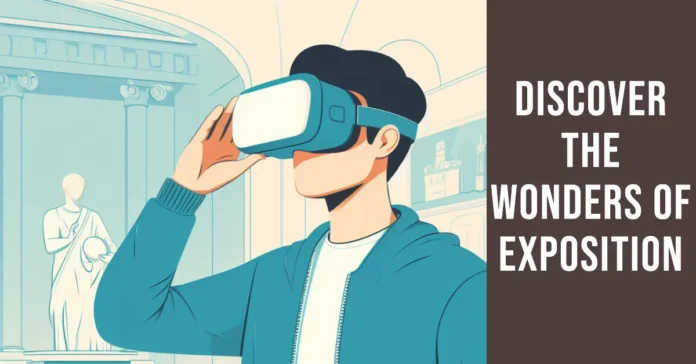In the realm of cultural and artistic exhibitions, the integration of technology has birthed a revolutionary way to explore and appreciate diverse forms of expression. 360 Virtual Tours for Expositions are redefining the way visitors engage with art, history, and cultural exhibits, providing an immersive and informative experience. Imagine having the ability to virtually navigate through a curated exposition, appreciating each piece and its context without the constraints of physical barriers. In this article, we’ll delve into the benefits of 360 Virtual Tours, offering both organizers and visitors a closer look at the transformative impact on the world of expositions.
Benefits:
- Virtual Exploration of Exhibits: Embark on a virtual journey through the heart of expositions. With a 360-degree view, visitors can explore exhibits, art installations, and cultural displays, providing an in-depth understanding of the curated content.
- Immersive Art Appreciation: Immerse yourself in the art. 360 Virtual Tours offer overlays or links that enable visitors to zoom in and appreciate the details of each piece, ensuring a comprehensive and immersive art-viewing experience.
- Interactive Exhibit Information: Access interactive exhibit information. Virtual tours include overlays with details about artists, historical context, and explanations of artistic techniques, allowing visitors to gain a deeper appreciation for the exhibits.
- Curator Insights and Audio Guides: Engage with curator insights and audio guides. Virtual tours can incorporate audio commentary, providing a guided experience that offers context, stories, and additional information curated by experts in the field.
- Virtual Art Installations: Experience virtual art installations. Some expositions feature interactive installations that respond to virtual engagement, providing a unique and dynamic exploration of contemporary art forms.
- Exposition Event Information: Stay informed about exposition events. Virtual tours include overlays or links to schedules, artist talks, and special events, ensuring visitors can participate in additional activities beyond exploring exhibits.
- Educational Content for Schools and Groups: Virtual tours cater to educational groups. Teachers and educators can utilize overlays or links to access educational content, making expositions accessible for school groups and facilitating remote learning experiences.
- Global Accessibility: Promote global accessibility. 360 Virtual Tours eliminate geographical constraints, allowing art enthusiasts from around the world to access and appreciate expositions without the need for physical travel.
- Post-Exposition Access: Extend the exposition experience post-event. Virtual tours offer post-exposition access, allowing visitors to revisit their favorite exhibits, share the experience with others, and continue engaging with the content.
- Preservation of Cultural Heritage: Contribute to the preservation of cultural heritage. Virtual tours provide a digital record of exhibits, ensuring the longevity and accessibility of cultural and artistic expressions for future generations.
Conclusion:
360 Virtual Tours for Expositions redefine the boundaries of artistic exploration, bringing cultural experiences to a global audience. Whether you’re an art enthusiast, student, or casual visitor, these tours provide an unparalleled way to connect with diverse forms of expression. Step into the virtual realm of expositions, explore artworks, and witness the unfolding tapestry of cultural heritage. Every click brings you closer to the excitement of virtual expositions, where art, history, and innovation converge. Explore, appreciate, and share the experience through the 360-degree lens of the Exposition virtual tour.
